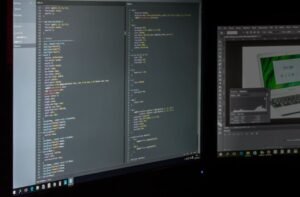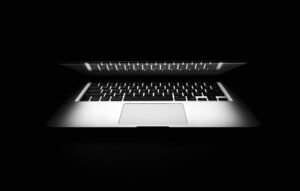How Do AI Deepfakes Work?
Deepfakes, a portmanteau of “deep learning” and “fake”, refer to synthetic media in which a person’s likeness, usually in the form of face or voice, is superimposed onto existing video or audio content. This technology has gained significant attention due to its potential for manipulation and misinformation. Understanding how AI deepfakes work is crucial in order to recognize and mitigate their impact.
Key Takeaways
- AI deepfakes are synthetic media that use artificial intelligence algorithms to alter or manipulate existing video or audio content.
- Deepfakes can be created by training machine learning models on large datasets of images or audio samples.
- Generative adversarial networks (GANs) are commonly used in deepfake creation, employing two neural networks competing against each other to create realistic outputs.
- Deepfakes pose ethical and societal challenges, including the spread of disinformation and the potential for misuse and exploitation.
AI deepfakes utilize sophisticated machine learning algorithms to manipulate and alter video or audio content. **These algorithms are trained on large datasets of real images or audio samples**, enabling the model to learn patterns and accurately generate synthetic media based on its training. One interesting aspect of AI deepfakes is their ability to learn and mimic the unique features of an individual’s face or voice, allowing for convincing impersonation.
Generative adversarial networks (GANs) form the basis for many deepfake algorithms. **GANs consist of two neural networks:** a generator network and a discriminator network. The generator network is responsible for creating the synthetic output, while the discriminator network tries to distinguish between real and synthetic content. *Through an iterative process, the two networks learn from each other, continuously improving the realism of the generated deepfakes*. This adversarial training process ensures that the generated content becomes increasingly difficult to differentiate from real media.
Creating AI Deepfakes Using GANs
To create an AI deepfake, the process typically involves the following steps:
- Collecting a large dataset of images or audio of the target person.
- Using the dataset to train the deepfake model, which involves training the generator and discriminator networks.
- During training, the generator network learns to generate increasingly realistic media, while the discriminator network improves its ability to distinguish between real and fake content.
- Testing and refining the model to maximize the realism and quality of generated deepfakes.
During the training process, *the deepfake algorithm learns the unique facial or vocal features of the target person through pattern recognition in the training dataset*. This enables the model to generate highly convincing deepfakes that closely resemble the person being impersonated.
Challenges and Concerns with AI Deepfakes
AI deepfakes raise a range of ethical, legal, and social concerns. The ability to convincingly manipulate video and audio content has significant implications, including:
- The spread of disinformation and fake news, as deepfakes can be used to fabricate instances of individuals saying or doing things they never actually did.
- Potential for misuse and exploitation, such as creating non-consensual pornography or defaming individuals by making them appear to endorse false statements or engage in illegal activities.
- Undermining trust in visual and auditory evidence, impacting the credibility of media and posing challenges for journalism and legal proceedings.
Deepfake Examples and Impact
The impact of AI deepfakes has been felt across various domains, including politics, entertainment, and cybersecurity. Here are a few notable examples:
| Domain | Example | Impact |
|---|---|---|
| Politics | A deepfake video of a politician making false and damaging statements. | Undermining public trust, impacting elections, and damaging reputations. |
| Entertainment | Deepfake technology used in movies and TV shows for visual effects and character replacement. | Enhanced storytelling and visual effects, but also potential ethical concerns regarding consent and consented representation. |
| Cybersecurity | Voice deepfake used in a social engineering attack to deceive individuals and gain unauthorized access to confidential information. | Increased risk of fraud and identity theft, emphasizing the need for enhanced security measures. |
Regulating and Combating Deepfake Technology
Given the potential for misuse and the widespread impact of deepfakes, regulatory and technical measures are being considered to address these concerns. Some approaches include:
- Developing specialized detection algorithms and tools to identify deepfakes accurately.
- Enhancing public awareness and media literacy to help individuals discern genuine from manipulated content.
- Implementing legal frameworks and policies to deter the creation and distribution of malicious deepfakes.
As AI deepfake technology continues to advance, it is crucial to proactively address the associated challenges and promote responsible development and use of synthetic media.

Common Misconceptions
Misconception 1: AI Deepfakes are only used for malicious purposes
One common misconception about AI deepfakes is that they are exclusively used for harmful or malicious purposes. While deepfakes can certainly be misused to create false information or manipulate people’s trust, they are not inherently negative. There are various legitimate applications where AI deepfakes are utilized, including entertainment, advertising, and even scientific research.
- AI deepfakes have been used in the film industry to digitally de-age actors and bring deceased actors back to life.
- Brands have integrated deepfakes into advertising campaigns to create more engaging and personalized content.
- Researchers use deepfakes to develop tools for facial recognition software and other related technologies.
Misconception 2: AI Deepfakes are always easy to spot
Another misconception is that AI deepfakes are always detectable with the naked eye. While there have been significant advancements in deepfake detection technologies, not all deepfakes can be easily identified. Some deepfakes are so convincing that even experts struggle to distinguish them from real content.
- Recent advancements in AI technology have made it increasingly difficult to detect deepfakes.
- Deepfake creators often employ sophisticated algorithms and neural networks to achieve incredibly realistic results.
- Detecting deepfakes often requires specialized tools and expertise, making it challenging for the average person to identify them.
Misconception 3: AI Deepfakes can only manipulate images and videos
Many people assume that AI deepfakes are limited to manipulating images and videos. However, deepfakes can also be applied to generate text or audio that imitates human speech patterns and writing styles. This technological capability raises concerns about the potential spread of misinformation and the manipulation of online conversations.
- AI algorithms can generate fake text that is nearly indistinguishable from human-written content, potentially amplifying fake news.
- Voice deepfakes can be created by training AI models on existing audio samples, leading to the ability to mimic someone’s voice convincingly.
- With the advancements in AI, deepfakes have expanded beyond visual media, raising new challenges for authentication and trust.

AI Deepfakes in Movies
In today’s film industry, AI deepfakes have become a game changer. With the ability to seamlessly transfer an actor’s face onto another person’s body, filmmakers can now recreate iconic characters from the past or bring fictional characters to life in a whole new way. This table showcases some popular movies that have utilized AI deepfake technology.
| Movie Title | Main Actor | AI Deepfake Actor |
|---|---|---|
| The Irishman (2019) | Robert De Niro | Youthful Robert De Niro |
| Star Wars: Rogue One (2016) | Peter Cushing | CGI Grand Moff Tarkin |
| Dead Men Don’t Wear Plaid (1982) | Humphrey Bogart | AI-generated Humphrey Bogart |
| Forrest Gump (1994) | Tom Hanks | CGI Forrest Gump |
AI Deepfake Influencers on Social Media
AI deepfakes have also made their way into the realm of social media, where influencers are constantly seeking creative ways to engage with their audience. This table highlights some well-known social media influencers who have made use of AI deepfake technology to entertain and captivate their followers.
| Influencer | Social Media Platform | AI Deepfake Content |
|---|---|---|
| Timothy DeLaGhetto | YouTube | AI-generated skits with famous celebrities |
| Lil Miquela | AI-created fashion shoots | |
| Jaden Smith | TikTok | AI manipulated dance-offs with other users |
| Bretman Rock | AI deepfake makeup transformations |
AI Deepfake Impact on Politics
AI deepfakes have introduced a new dimension to political discourse. This table examines some notable instances where AI deepfake technology has been used to manipulate political footage or create persuasive and controversial content.
| Event | Political Figure | AI Deepfake Impact |
|---|---|---|
| Presidential Debate (2020) | Donald Trump | Fabricated video shows controversial statements |
| Boris Johnson’s Speech (2019) | Boris Johnson | AI-generated speech criticizes opponents |
| Congressional Address (2018) | Nancy Pelosi | Manipulated video portrays her as incompetent |
| G7 Summit (2017) | Angela Merkel | Falsified video shows Merkel supporting extreme policies |
AI Deepfakes in Sports
Not only limited to the entertainment industry and politics, AI deepfakes have also made their presence felt in the sports world. Athletes and fans alike have experienced the imaginative power of AI, as showcased in this table.
| Sport | Athlete | AI Deepfake Moment |
|---|---|---|
| Tennis | Roger Federer | AI-generated match against Rafael Nadal |
| Basketball | Michael Jordan | CGI simulations of Jordan’s iconic dunks |
| Football | Lionel Messi | AI manipulated video reveals unseen ball control skills |
| Soccer | Cristiano Ronaldo | AI-created highlight reel of Ronaldo’s best goals |
AI Deepfakes and Historical Figures
Exploring the realms of history, AI deepfakes have allowed us to reimagine the lives and actions of prominent historical figures. This table sheds light on some pivotal individuals and the way AI has reinvigorated their stories for modern audiences.
| Historical Figure | Time Period | AI Deepfake Application |
|---|---|---|
| Leonardo da Vinci | Renaissance | AI-generated interviews and conversations |
| Queen Elizabeth I | Tudor Era | AI-rendered speeches and public addresses |
| Albert Einstein | 20th century | AI-created lectures on theoretical physics |
| Cleopatra | Ancient Egypt | AI simulated recreations of her court |
AI Deepfakes and Digital Art
AI deepfakes have brought innovation and creativity to the world of digital art. This table displays renowned artists who have embraced this technology, pushing boundaries and redefining artistic expression.
| Artist | Art Medium | AI Deepfake Integration |
|---|---|---|
| Andy Warhol | Pop Art | AI-generated recreations of classic Warhol pieces |
| Yayoi Kusama | Installation Art | AI manipulated virtual reality experiences |
| Salvador Dalí | Surrealism | AI deepfake collaborations with contemporary artists |
| Banksy | Street Art | AI-enhanced murals and digital installations |
AI Deepfakes and Journalism
AI deepfakes have not spared the realm of journalism, raising concerns about misinformation and ethical dilemmas. This table presents instances where AI deepfakes have caused controversy in the world of news and media.
| News Event | Media Outlet | AI Deepfake Impact |
|---|---|---|
| Election Coverage (2020) | News Network | AI-generated videos altered political speeches |
| Crisis Footage (2019) | Online News Portal | Deepfake videos misled the public about events |
| Climate Change Protest (2018) | Journalistic Documentary | Manipulated video portrayed a distorted narrative |
| Interview with a Celebrity (2017) | Talk Show | AI deepfake imitated the celebrity’s voice and appearance |
AI Deepfake Potential in Medical Training
AI deepfakes possess significant potential in medical education and training, allowing for more accurate and realistic simulations. This table explores how these technologies have revolutionized medical learning.
| Medical Procedure | Training Environment | AI Deepfake Application |
|---|---|---|
| Surgery | Operating Rooms | AI-generated surgeries for practice and analysis |
| Diagnosis | Medical Schools | AI-simulated patient cases for student evaluation |
| Medical Imaging | Radiology Departments | AI-enhanced scans for diagnosis interpretation |
| Emergency Response | Simulation Centers | AI-rendered emergency scenarios for training exercises |
AI deepfakes have rapidly transformed various sectors, including entertainment, politics, sports, art, journalism, and even medical training. While these advancements offer exciting possibilities, societal challenges arise alongside them. As AI deepfakes continue to evolve, concerns regarding the authenticity of media, privacy, and the potential for misuse persist. Striking a balance between innovation and ethical considerations is crucial in harnessing the full potential of this technology.
Frequently Asked Questions
What are AI deepfakes?
AI deepfakes are computer-generated or altered media, typically images or videos, that use artificial intelligence techniques to realistically replace or manipulate the appearance of people or objects in the content.
How do AI deepfakes work?
AI deepfakes work by training deep learning models, such as generative adversarial networks (GANs), on large datasets of real media to learn the patterns and characteristics of the subjects within the content. These models can then generate new media that imitates and alters the appearance of the original subjects.
What is a generative adversarial network (GAN)?
A generative adversarial network (GAN) is a type of deep learning model that consists of two components: a generator network and a discriminator network. The generator network generates new media, while the discriminator network evaluates the authenticity of the generated media. Through an adversarial training process, these networks compete against each other to improve the realism of the generated media.
What are the potential applications of AI deepfakes?
AI deepfakes have various applications, including entertainment, visual effects, virtual reality, and even in certain research fields. However, they can also be misused for deceptive purposes, such as spreading false information, identity theft, and fraud.
How can AI deepfakes be detected?
Detecting AI deepfakes can be challenging as they are designed to be visually convincing. However, researchers and experts are constantly developing new detection techniques, including analyzing facial and body movements, examining unnatural artifacts, and using machine learning algorithms to identify inconsistencies in the media.
Are there any ethical concerns regarding AI deepfakes?
Yes, there are ethical concerns associated with AI deepfakes. The ability to manipulate digital media with such realism can lead to malicious use, privacy violation, defamation, and the spread of fake information. Therefore, it is crucial to establish regulations and guidelines to prevent misuse and protect individuals.
Can AI deepfakes be used for positive purposes?
AI deepfakes do have certain positive applications, such as in the entertainment industry for creating realistic visual effects or in virtual reality for immersive experiences. However, caution and responsible use are necessary to prevent potential harm or misuse.
What steps are being taken to combat the negative effects of AI deepfakes?
Researchers, academics, and technology companies are actively working on developing robust deepfake detection systems, raising awareness about the existence and risks associated with AI deepfakes, and collaborating with policymakers to establish laws and regulations that can mitigate the negative effects of deepfakes.
How can individuals protect themselves from AI deepfakes?
Individuals can protect themselves from AI deepfakes by being cautious about the authenticity of media they encounter online, verifying sources before trusting information, using reputable fact-checking sources, staying informed about deepfake detection technologies, and reporting suspicious or misleading content to appropriate platforms.
Can AI deepfakes be legally used?
The legality of using AI deepfakes varies based on jurisdiction and the specific use case. While some uses, such as parody or artistic expression, may be protected under fair use or freedom of speech, other uses, such as using deepfakes for malicious intent or defaming individuals, may be subject to legal consequences. It is essential to consult local laws and regulations for a comprehensive understanding of the legal implications.




